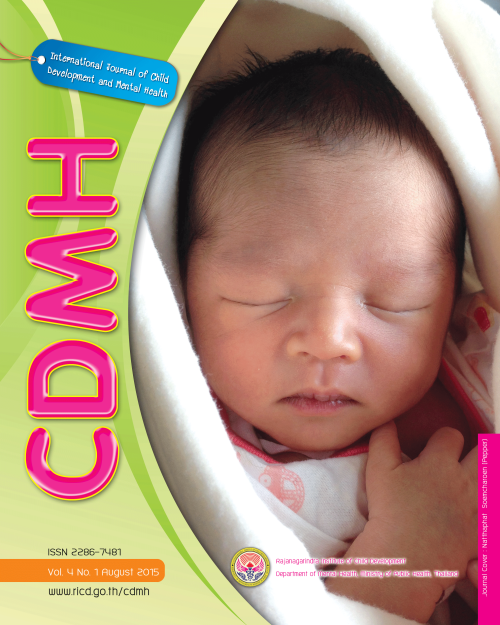Overview of the Reporting Sources of Developmentallydelayed Children in Taiwan Between 2011 and 2012
Main Article Content
Abstract
Early Intervention (EI) services, as defined in
The Bye-laws of Children and Youth Welfare Law,
provided for 1.2 % of the nation’s infants, toddlers
and preschool children between 2011 and 2012;
however, the proportion was higher in some
counties or cities and lower in others. In order
to elucidate factors that may influence reporting
rates, we analyzed the reporting sources from
23 counties/cities between 2011 and 2012. We
analyzed registry data of newly reported cases
between 2011 and 2012, published by the
Department of Statistics, Ministry of Interior of
Taiwan. The reporting sources were categorized
into eight types, and the percentage of cases
reported by each source was calculated. The
statistical relationship between these variables
and the reporting rates were analyzed with
suitable methods. P value < 0.05 was regarded as
statistically significant. The estimated 2-year average
reporting rate of new cases was 11.97‰. The
reporting rate was significantly higher among
children living in counties compared with children
living in cities (P = 0.0007). The reporting rate was
also significantly higher among children living in
low urbanized areas as compared with children
living in highly urbanized areas (P = 0.0067). The
proportion of medical organization reported
cases was the highest of all the reporting sources
(39.99%). Higher reporting rates from householders,
guardians and health centers positively affected
the total reporting rates (P = 0.0499 and P=0.0151,
respectively).
In conclusion our study shows that many
sources contribute to the notification of children at
risk or with developmental delay, with implications
for regular surveillance and screening children
development by people involved with them.
Incorporating more efficient developmental
screening tools, including parent-concerned based
screening questionnaires during health screening,
with additional staff to do the screening, may
increase the proportion of children with possible
developmental delay being notified.
Article Details
![]()
Creative Commons License
This work is licensed under a Creative Commons Attribution-NonCommercial-No Derivatives 4.0 International (CC BY-NC-ND 4.0)
The authors retain copyright and permit the journal the copyright of first publication
Articles, once having passed the review process and accepted for publication in the CDMH Journal, are copyrighted under the CDMH Journal, Department of Mental Health, Ministry of Public Health. Please be aware distribution of CDMH Journal content for commercial purposes without permission is expressly prohibited. However, distribution with intent to educate, advocate, or spread awareness within the general public and research communities is permitted and encouraged with the understanding that the CDMH Journal Editorial Board do not hold jurisdiction or liability for any accompanying comments, text, or information from third parties, either in favor for or against the original article’s assertions, conclusions, methodology, or content.


